This region of Panama’s Pacific coast offers some of the most diverse opportunities for sport fishing anywhere. Here are just a few of the many types of Panama fish that you may hook up.
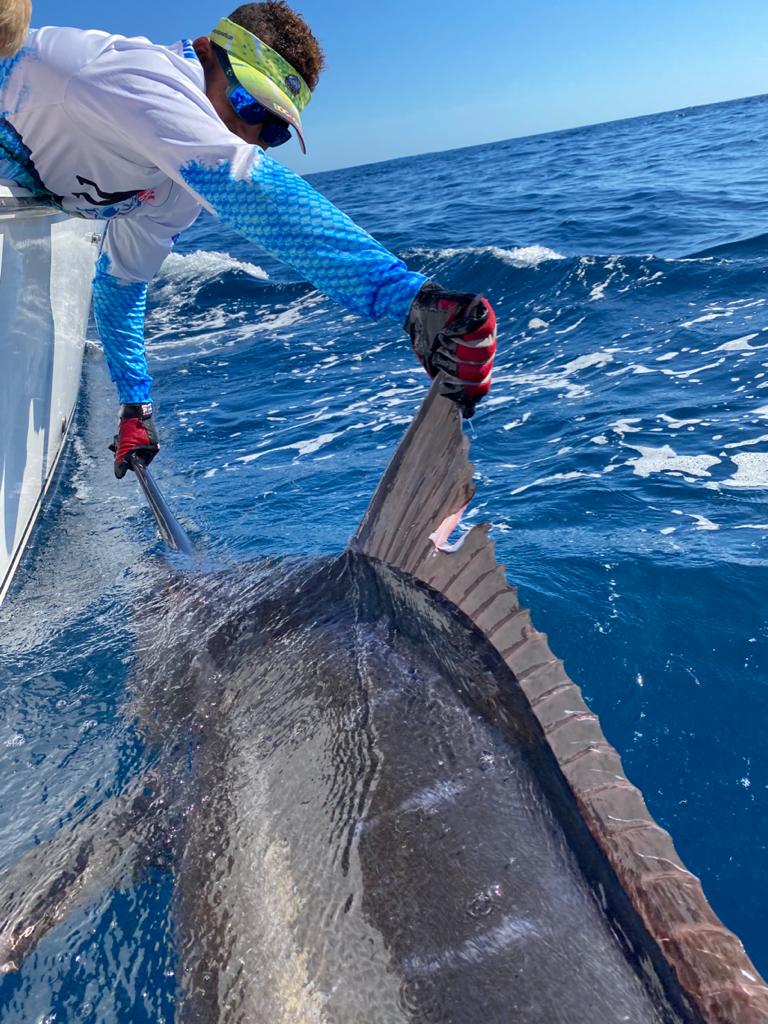
Black Marlin
While blue marlin inhabits all warm seas, blacks are strictly limited to the Pacific and Indian oceans.
While blue marlin seldom ventures from the deep-blue open ocean, blacks are known to prowl shallow banks and near-coastal waters.
Australians often use huge live or rigged dead baits to hook grander blacks, which are also taken off Hawaii, Panama, north into Mexican waters, and elsewhere.
Along with the blue marlin, this apex predator is one of the oceans ultimate trophies. To date, the ultimate black all-tackle-record 1,560-pounder came from Cabo Blanco, Peru, in 1953.
Marlin is a protected species in Panama. Catch and release practice only
Blue Marlin
Hooking and releasing a large blue marlin qualifies for many anglers as sport fishing’s greatest challenge, thrill, and accomplishment.
Blues are caught in oceans around the world on live and dead baits and large trolled lures. See the bill of a big blue in a trolling spread and then watch an amazing display of power as hundreds of pounds of angry billfish repeatedly go airborne—this makes for angling’s most unforgettable sights.
The all-tackle record for the Atlantic is 1,402 pounds, 2 ounces, caught off Vitoria, Brazil, in 1979. For the Pacific: 1,376 pounds, taken off Kona, Hawaii, in 1982.
Catch and release Panama fish species.
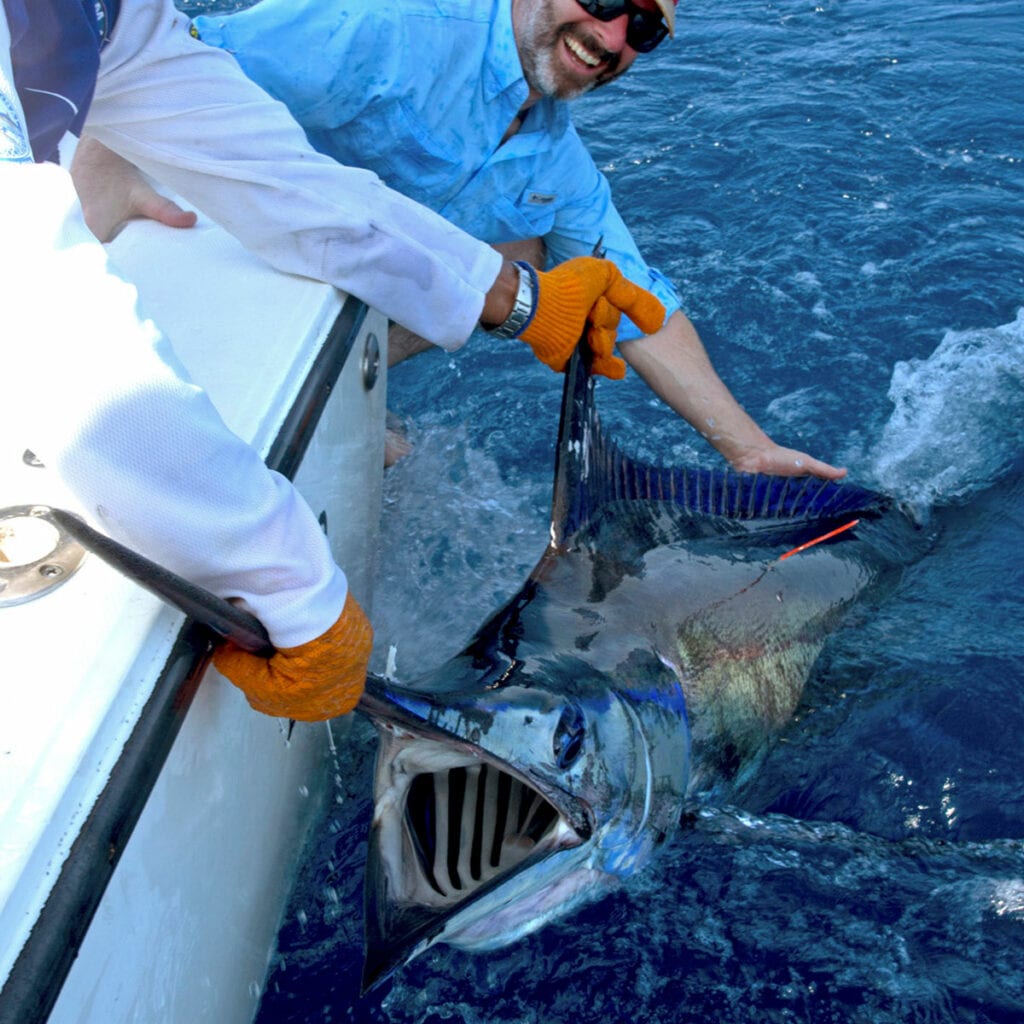

Pacific Sailfish
Sailfish range throughout warm waters of the Pacific and Indian oceans. I. Platypterus tends to run considerably larger in size than its Atlantic counterpart, with 100-plus-pound fish being run of the mill.
Its fighting ability and spectacular aerial acrobatics endear the sailfish to the saltwater angler, but it tires quickly and is considered a light tackle species.
Fishing methods include trolling with strip baits, plures, feathers or spoons, as well as live bait fishing and kite fishing.
The most action is found where sailfish are located on or near the surface where they feed.
The world record has held since 1947: a 221-pounder taken off Ecuador.
Sailfish is a Catch and release Panama fish.
Yellowfin Tuna
Yellowfin (and the very similar bigeye) tuna are incredibly popular worldwide among sport fishermen—whether running-and-gunning to throw poppers into great breaking schools baits.
Panama in the eastern Pacific, known as the Tuna Coast has some of the yellowfin action in the world from Mid Feb till August.
The current all-tackle world record is 427 pounds, caught off Cabo San Lucas, Mexico, in 2012.
Yellowfin Tuna (along with the Broadbill Swordfish) as pound for pound the hardest fighting fish in the ocean.
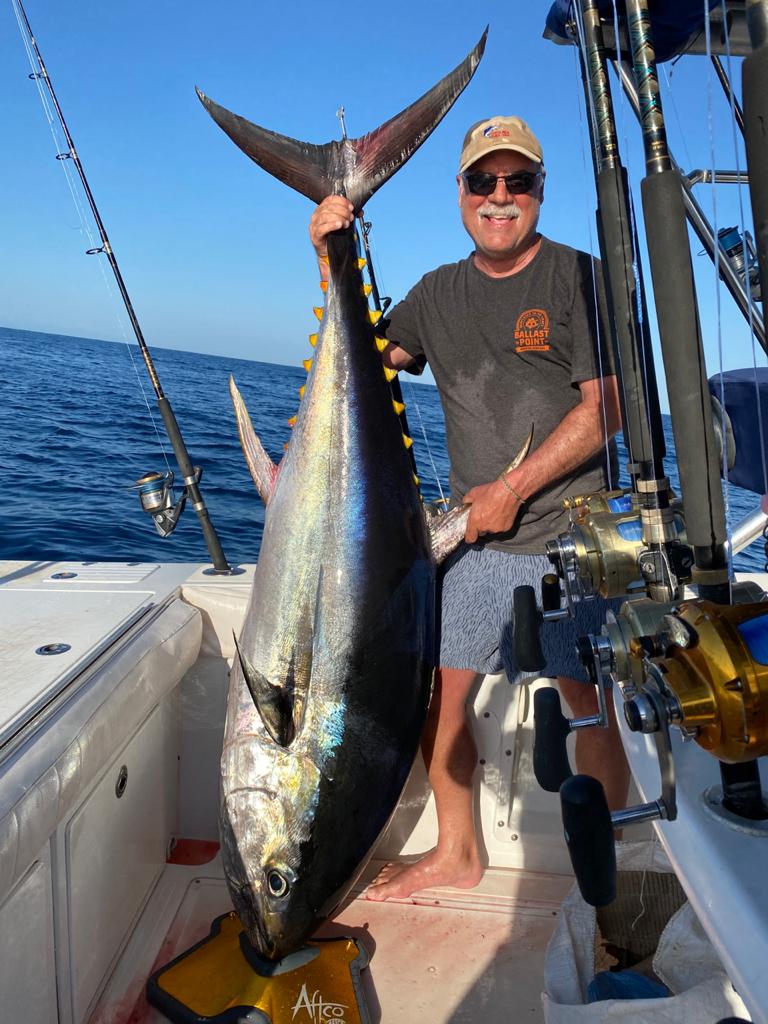
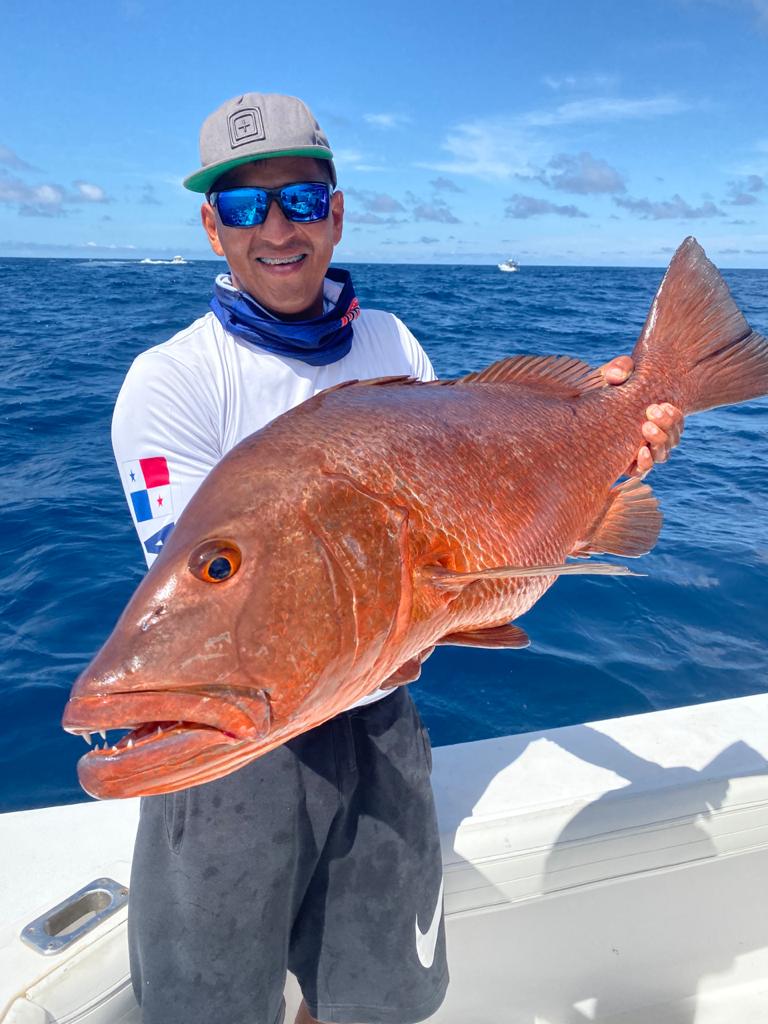
Cubera Snapper
(Lutjanus cyanopterus)
Triangle-shaped vomerine tooth patch with thick, heavy lips and strong canine teeth found in both jaws, one pair visible when mouth closed.
Brute power is what these giants of the snapper clan are all about. Cubera snapper are voracious predators. It’s like they’re angry and they are going to take it out on whatever they choose to eat.
Cubera hit bait and head back to structure/hole 99 percent of the time. It’s a challenge on any tackle, you need stopping power otherwise you won’t get the fish to the boat.
Pacific Cubera (record: 78 pounds, 12 ounces) lurk over shallower reefs where they’ll come up to strike (explode on) large poppers.
Cubera is a Catch and release Panama fish.
Roosterfish
The distinctive high, comb-like dorsal fin of a lit-up roosterfish cutting through green inshore waters, hot on the trail of live bait or popper, is one of the most memorable sights in all of sport fishing.
Roosters are unique to the eastern Pacific, where they are caught from Baja into northern South America. Once thought to be a species of jack (Carangidae), roosters are in fact in their own family.
They do, however, certainly fight with jack-like stubbornness and power but add to that fight the ability to jump, which further explains their appeal as game fish. Roosters are fish of beaches and rocky shores.
They can reach weights in excess of 100 pounds—the IGFA record since 1960 was 114 pounds from La Paz, Mexico.
Catch and release species in Panama.
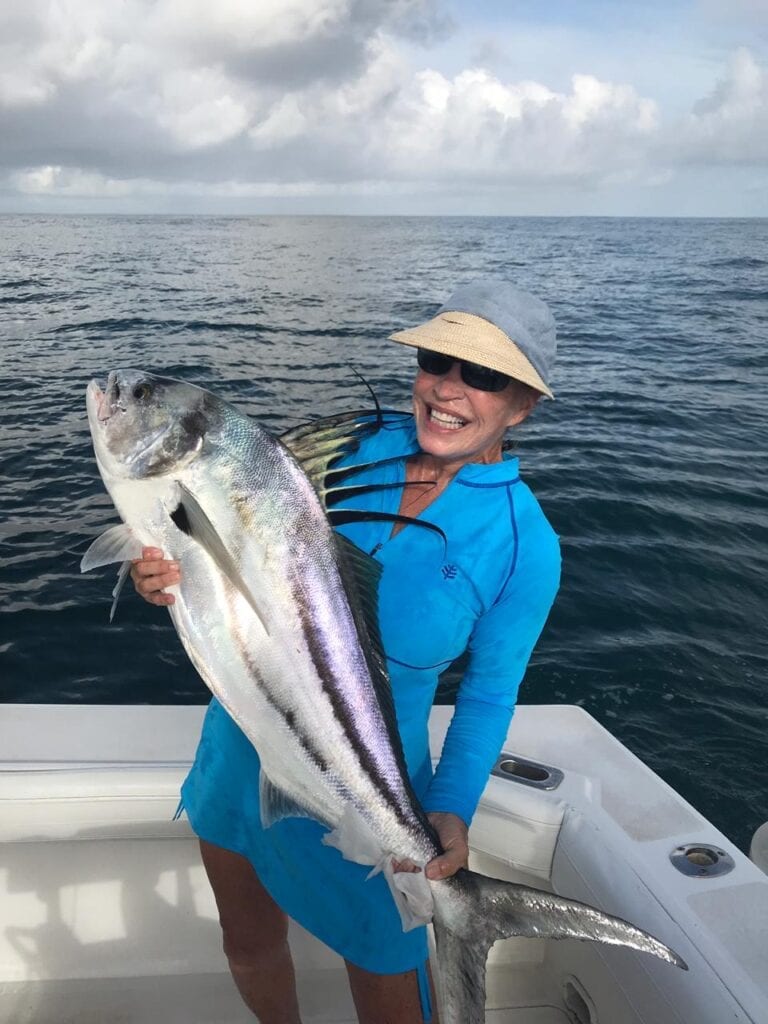
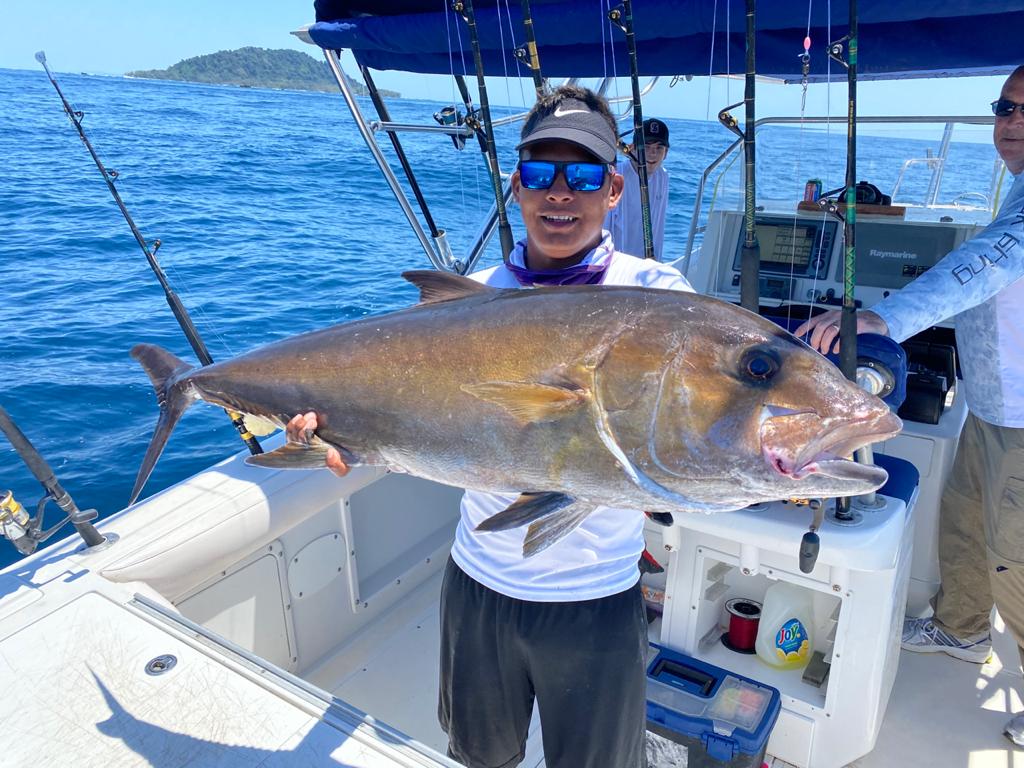
Amberjack
Amberjack, or Reef Donkeys, are not a great looking fish, but they sure pull hard. In many parts of Latin America, they are called Pez Fuerte which literally means Strong Fish. They are found in tropical reefs in both the Atlantic and Pacific. They sometimes come up to the surface but are generally found near the bottom. Although they are not as adept at bricking you in the rocks as Snappers or Groupers, you do need to pull hard to ensure that doesn’t happen.
Amberjack readily eat lures and bait fish either at the bottom or at whatever depth they happen to be at. They can sometimes be coaxed to the surface with chum.
Wahoo
Built for speed, wahoos are described as torpedoes with fins. Many anglers believe wahoo to be the fastest fish in the sea and perhaps, size for size, they are.
But in any case, their first run (particularly if the tackle is of appropriate size) is simply smokin’ hot. A testament to their velocity, some wahoo trollers pull lures at speeds exceeding 15 knots.
Wahoos are found around the world in tropical/warm seas and may travel in packs. They typically patrol near the surface, from blue water far offshore to the edges of steep rocky shorelines and submarine shelves.
One of the largest members of the mackerel family, wahoo are esteemed for their white flesh.
The all-tackle world record weighing 184 pounds was taken off Cabo San Lucas in 2000.
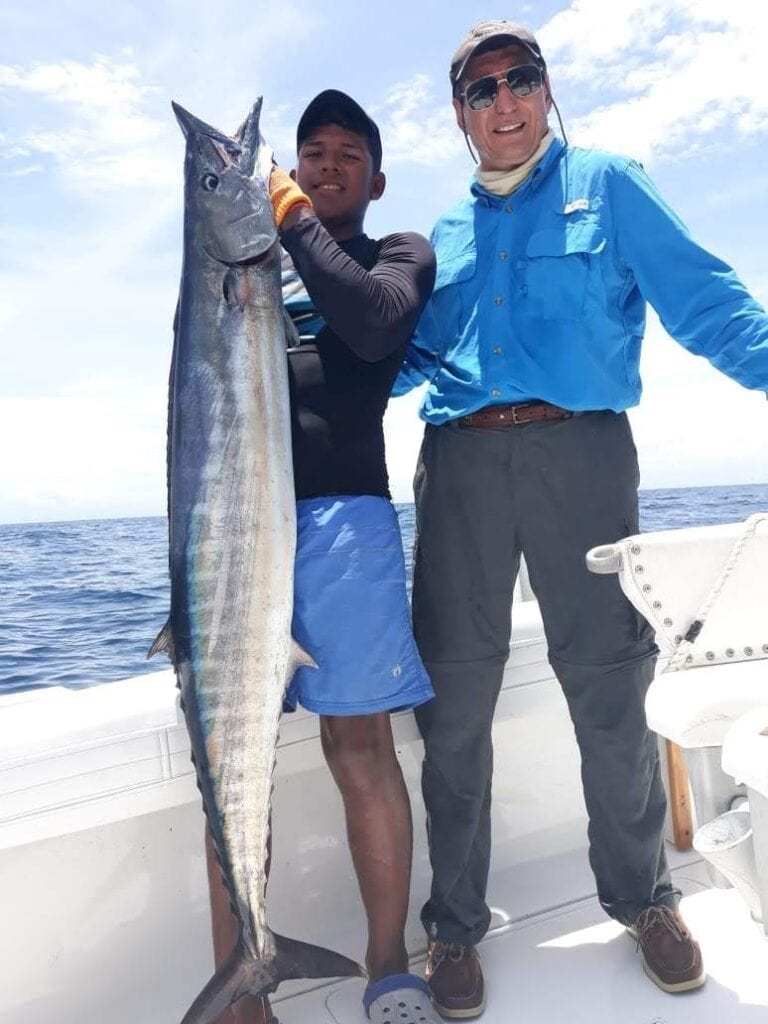
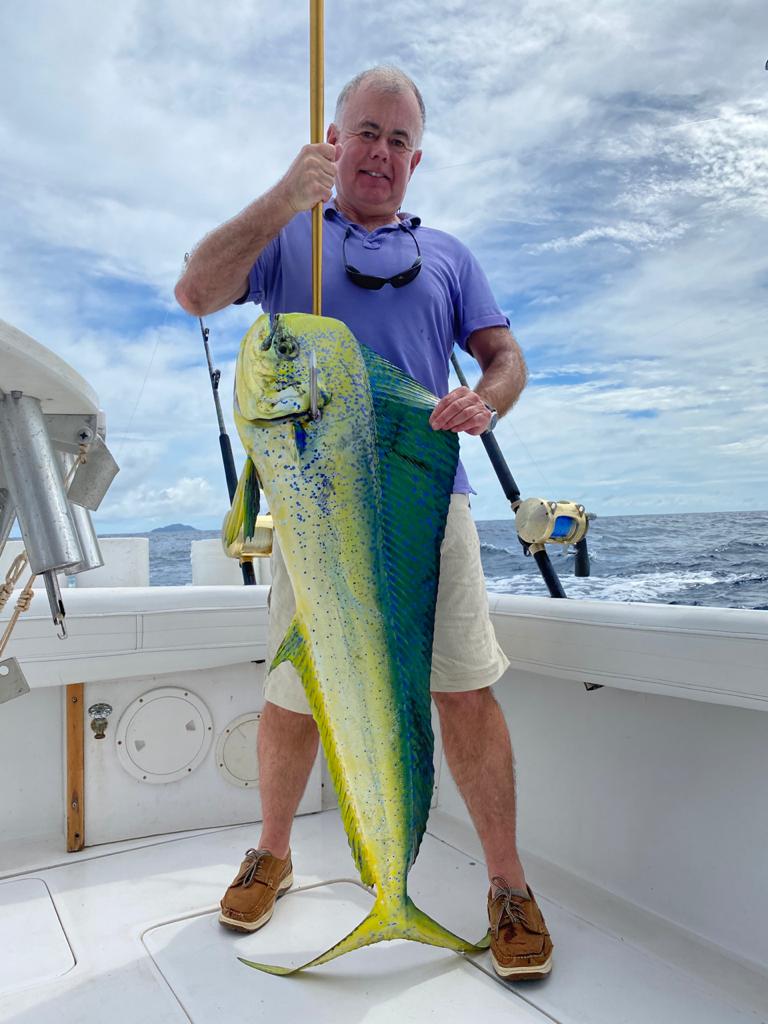
Dolphin mahi-mahi, dorado
The ideal and arguably most popular offshore game fish—a willing striker, sight-casting friendly, determined, and often aerobatic fighter, this beautiful catch has a tendency to be stubborn.
What else could one want? Marlin magazine’s Dave Ferrell says it’s the perfect game fish. The flashing neon hues of emerald, peacock blue, and brilliant yellow among a lit-up school of rapacious dolphinfish around a boat is both common and extraordinary; there’s nothing quite like it in fishing.
Dolphin eat insatiably and grow at an astounding rate—up to 18 inches in a year.
The all-tackle-record 87-pounder was taken off Papagallo, Costa Rica, in 1976.
Mullet Snapper
Mullet Snapper (Pargo Lisa) is an elongated Snapper found in the Eastern Pacific between Baja down to around Peru. Unlike many Snappers, they are a midwater fish found over rocky areas down to around 150 feet. They sometimes come up to the surface and can be caught on poppers. They are an excellent fighter for their size.
The current official world record is 45 pounds. The biggest ones are caught on large live baits fished on the bottom.
When they are up shallow, these fish can sometimes be seen from the surface. At these times poppers work well. Make sure you pause in between “chugs” and fish them a little slower than you would for Jacks, etc. Poppers are worth a try even if you can’t see them if you are over rock piles that rise up to 40 feet or so. If a subtler presentation is called for, try a surface iron jig. They can also be caught on metal jigs fished deeper. Live baits such as sardines work well. For the really big ones, larger live baits up to two or three pounds can work.
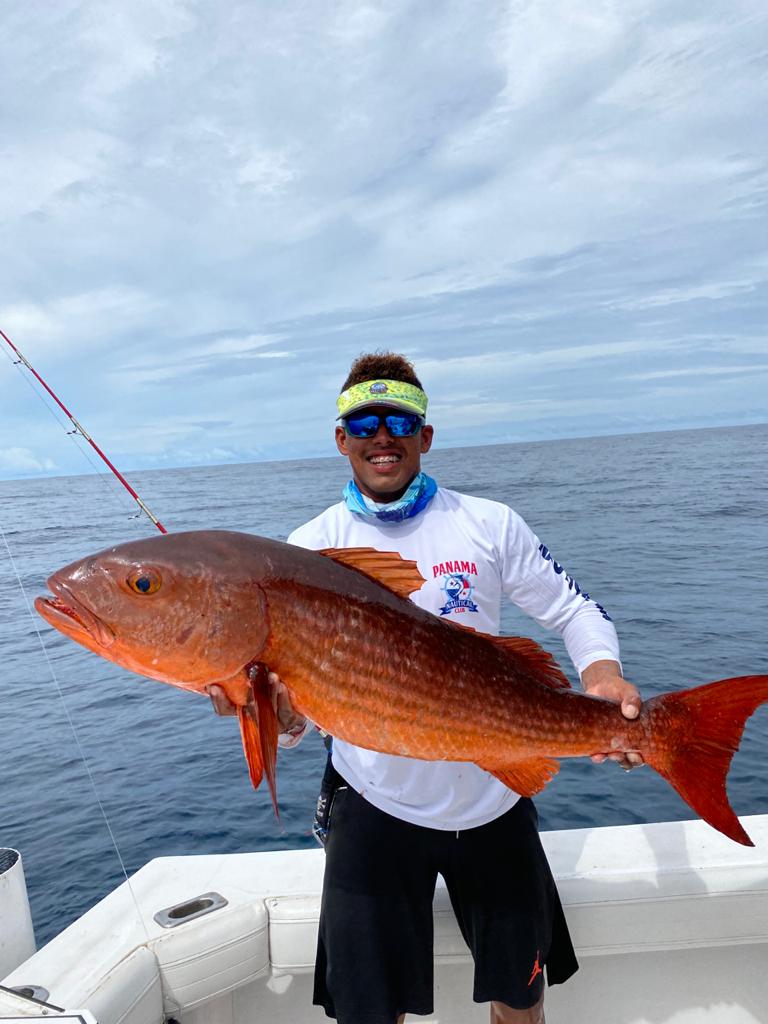
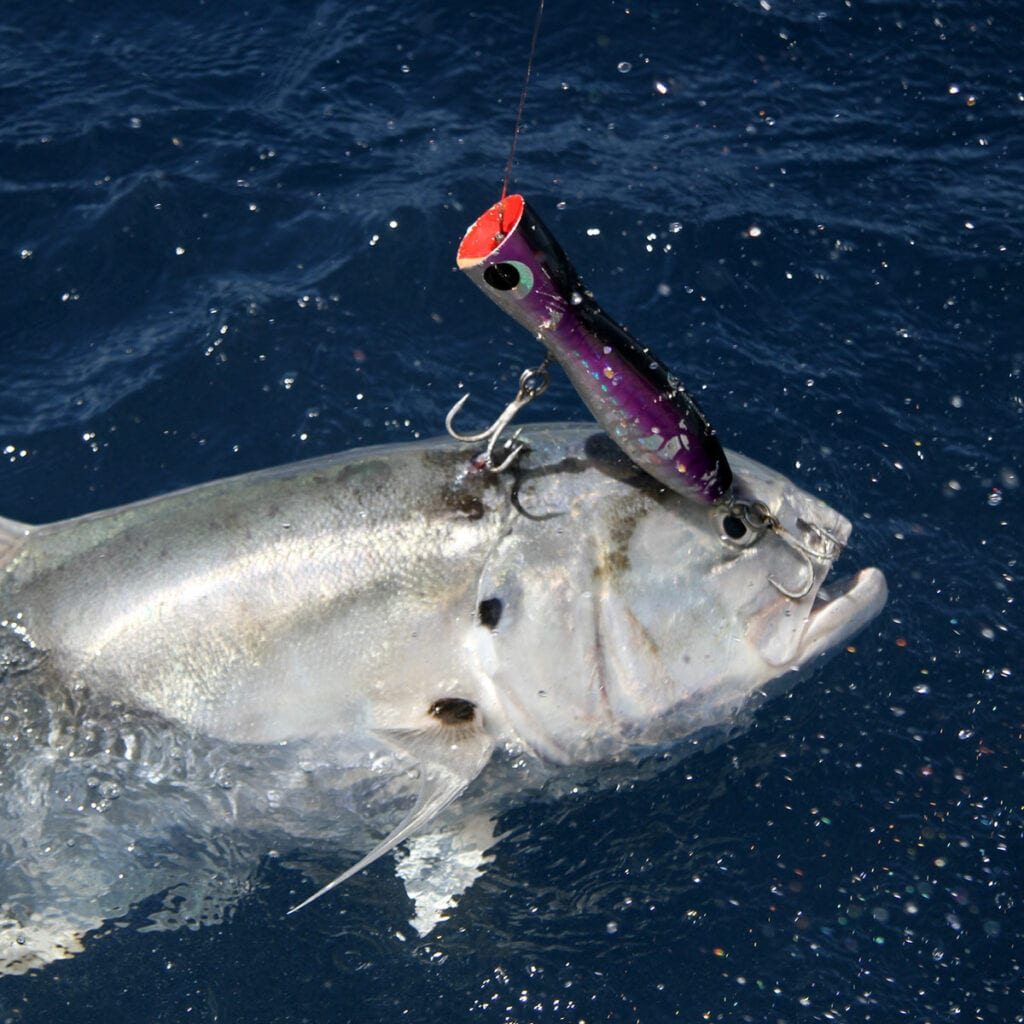
Almaco Jack
Almaco jack is a game fish of the Carangidae family; they are in the same family as Yellowtail and Amberjack. They feed, both day and night, on other smaller fish such as baitfish and small squid. The flesh is thick and dense like Tuna and can easily pass for white albacore if prepared as sushi.
The Almaco jack is a pelagic species that can be found in small groups on slopes and off reefs at depths from 5 to 160 meters (2.7 to 87.5 feet). They visit wrecks more often than most other jacks. In the eastern Pacific, Almaco jack live from California to Peru and the Galapagos islands. They typically swim at depths ranging from 5,35 meters (16,115 feet). Almaco jack’s unusual stamina makes them a prime target for deep sea fishermen. They remove skin-based parasites by rubbing against the rough skin of passing sharks—they even occasionally rub against passing scuba divers because they mistake them for sharks.
Sport Fishing Throughout the Year
Find your fish of a lifetime in the waters where numerous IGFA World Records have been set. The sea is always ready to welcome you back or give you a fantastic first fishing experience. Check out our Fishing Calendar to see which species await your journey any month of the year.
